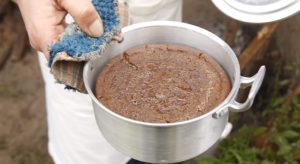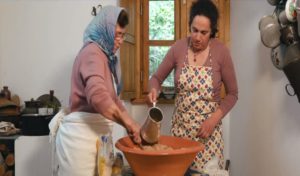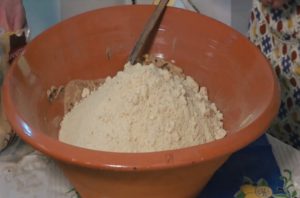Pan Cake
Bolo de Tacho or Pan Cake is a typical cake from the cuisine of Monchique, the county where its recipe and preparation originate. This cake is linked to the culinary tradition of farming families and it originates from medieval times.
In May, in Monchique, the regional goods are celebrated with the letter M: “mel” (honey), “milho” (corn), “medronho” (a brandy-like drink), and Bolo de Maio (Cake of May), also known as Bolo de Tacho (Cake in the Pot).
On the day before the 1st of this month, the Bolo de Tacho used to be prepared slowly. Tradition has it that, first, one had to take the corn to the mill, because the flour for the Bolo de Tacho is very thin, thinner than that used in porridge.
In the morning the flour was heated up with coffee or lemon tea. After lunch the remaining ingredients were added: honey, lard, cinnamon, fennel seeds, anise, olive oil, chocolate, cocoa and an egg. The cake would cook overnight in pots placed in wood ovens, which would cool down by the next morning.
On May 1, the cake would be ready to be taken to picnics in the woods, preferably next to water, in order to be shared with family, friends, and neighbours. People would eat the Bolo de Tacho on this day so that, as the elders said, they would “avoid letting May settle in”, which is to say: to avoid the laziness that comes with good weather, because there is still much work to do in the months ahead.
With strong rural roots, the cake follows the taste of whoever makes it; despite the fact that all recipes mention the same ingredients, they are applied to taste, which makes the flavour of each cake different even if it is made by the same person – it normally appears with a very dark color, compact, cylindrical and with variable height and diameter, depending on the size of the pot in which it is made.




